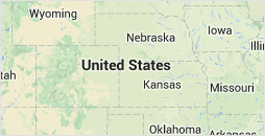Emily Clarke
PHONE NUMBER : -----
Map

Tips to Make Sure Your E-Commerce Business Has a Good UX Design
User experience (UX) has quickly become one of the most vital pieces of website design. How a user interacts with a website, particularly in e-commerce, can play a large role in how successful your conversion efforts play out. If you run an e-commerce website and you're looking for ways to improve UX, below are some design tips:
Make It Accessible for Mobile
More and more, people are shopping online using mobile devices like smartphones and tablets. If your e-commerce resources don't have accommodating mobile website design options, you may find that your bounce rate keeps going up.
Thankfully, there are plenty of e-commerce site-building tools out there that provide easy-to-use and responsive mobile website design tools that can help your online store perform well across desktops and smartphones. Some of these tools allow you to create separate versions of your e-commerce site for both desktop and mobile. Find the best mobile website design companies by visiting this website.
Have People Test Your Site
You may think that you've designed a user-friendly e-commerce site, but prospects and leads may think differently. When working in web design, it can be easy to lose sight of the bigger picture and get too lost in the details. Many times, designers can overlook problematic features simply because they've been working with these features for so long.
To overcome these challenges, consider having others in your industry test your site. It's usually a good idea to have independent online shoppers experience the site without any input from you beforehand to remove the potential for bias. After testing your site, ask users for feedback about features that they liked or features that caused a hindrance.
Pay Attention to Loading Times
Google and other search engines may penalize your site if it takes too long to load, and this can hurt search engine ranking. Additionally, if your e-commerce site takes too long to load because you've crammed it full of bells and whistles, consumers may exit your site before even having a chance to shop.
Pay attention to load times across different connection speeds. You may also consider working with testing tools that will measure load speeds and provide pointers to help you identify things like scripts, large images, or other factors that are causing your site to load slowly.
Author Resource:-
Emily Clarke writes about building the perfect website in minutes, without using any code for your small business, portfolio, personal blog or e-commerce website. You can find her thoughts at website in minutes blog.
